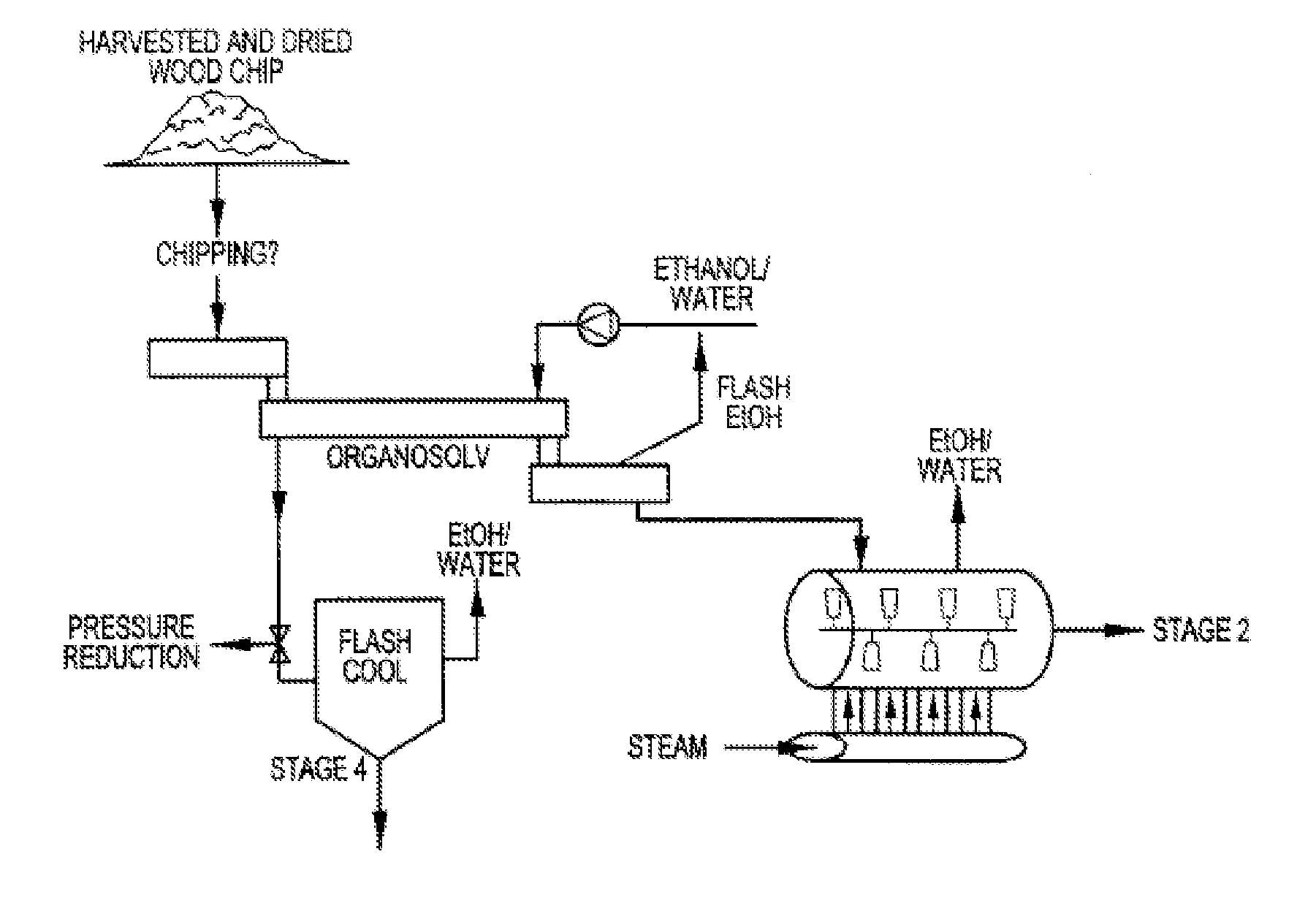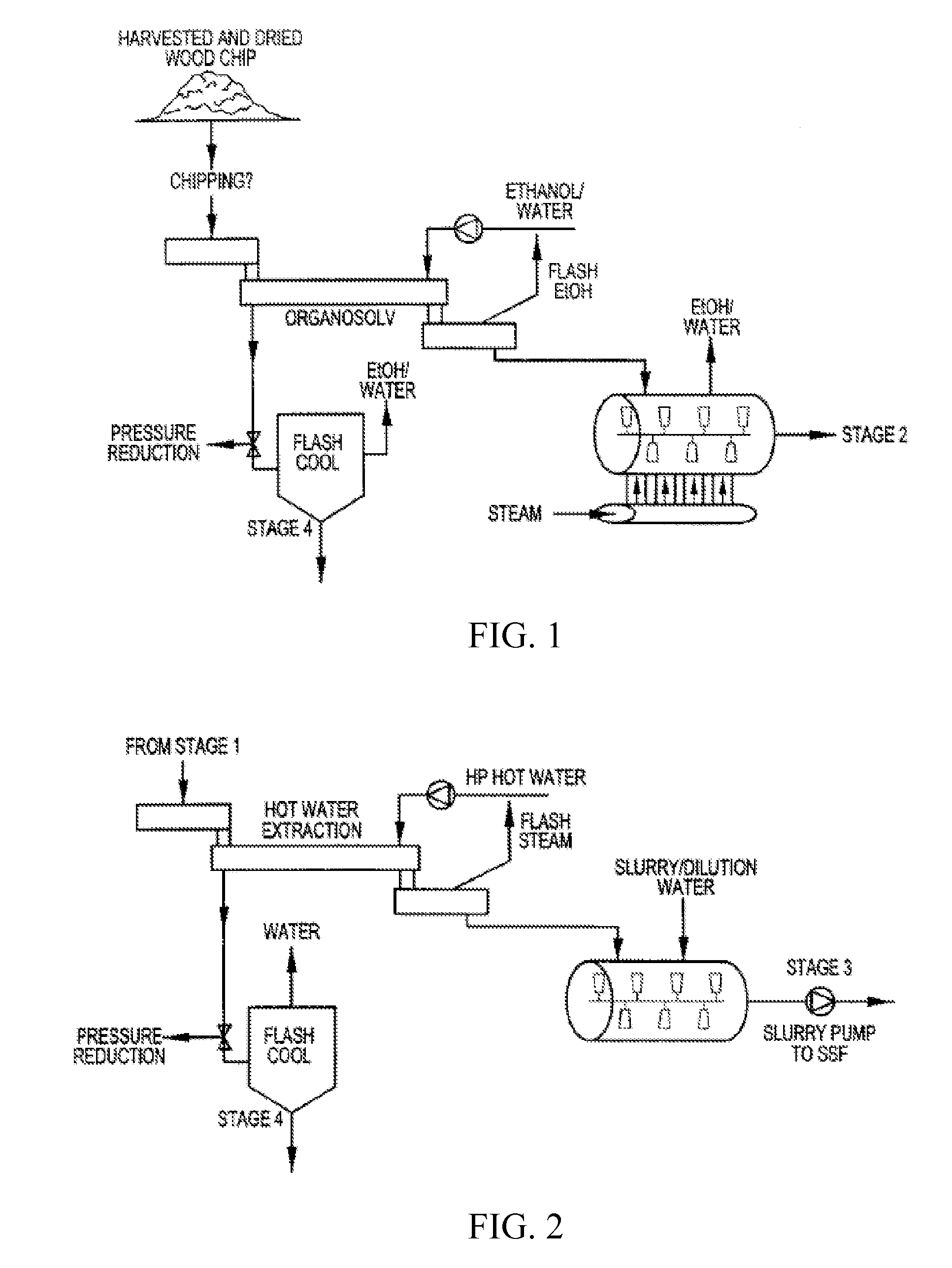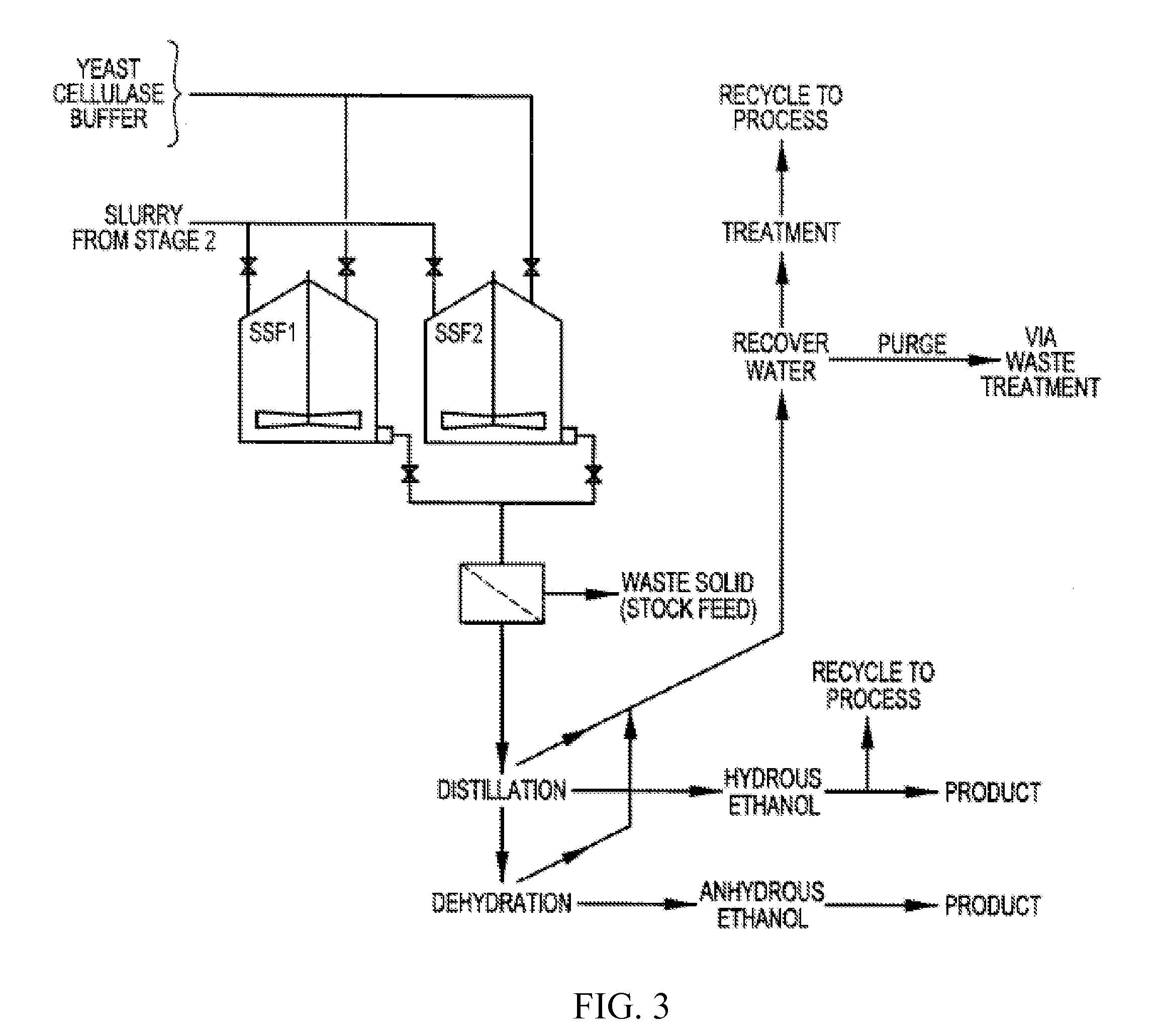Lignin and other products isolated from plant material, methods for isolation and use, and compositions containing lignin and other plant-derived products
a technology of plant material and lignin, which is applied in the field of lignin and other products, can solve the problems of affecting affecting the production efficiency of lignin, and affecting the quality of plant material, so as to improve the general health of animals, reduce the degree of contaminant composition, and reduce the effect of toxicity
- Summary
- Abstract
- Description
- Claims
- Application Information
AI Technical Summary
Benefits of technology
Problems solved by technology
Method used
Image
Examples
example 1
Preparation and Composition Analysis of Untreated Salix Biomass
[0091]Stems of Salix viminalis or Salix schwerinii ‘Kinuyanagi’ were chipped with a garden mulcher. The wood chips were dried at 40° C. for 24 hours and sieved by hand between two wire meshes of British test sieve with apertures of 2.8 and 4 mm. The composition of the sieved and unsieved Salix chips was assessed, with the results being shown in Table 1. The mass composition was assessed using laboratory analytical procedures (LAPs) developed by the National Renewable Energy Laboratory (NREL, Golden, Colo.). Values are expressed as gram of component per 100 g of dry untreated chips. Extractives were isolated using a Soxhlet extractor, dried and weighed. Lignin concentrations were determined after chemical hydrolysis of the Salix chips (4 hours with 72% sulfuric acid at 102° C.). Acid soluble lignin was measured by densitometry at 320 nm and the concentration of the non-acid soluble lignin was...
example 2
Harvesting Precipitated Lignin by Dissolved Air Flotation
[0095]Lignin was precipitated from black liquor, and the precipitate harvested using a dissolved gas (air) flotation technique (“DAF”), as follows. Water was supersaturated with nitrogen by storage under elevated nitrogen pressure (2 barg) for at least 30 minutes. The water was allowed to leave the pressure vessel through a metering valve which regulated the flow rate of aerated water at 26 ml / min. Filtered black liquor (containing 12.4 g of lignin per liter) was pumped from the black liquor tank at various flow rates using a peristaltic pump. The aerated water and black liquor were mixed in a venturi mixing device and delivered into a flotation tank. Upon rapid mixing with the gassified water, the lignin in the black liquor precipitated, flocculated and floated to the surface of the tank. The supernatant passed under a dam and overflowed out of the tank. Based on the tank volume and the liquid flow rates, the residence time o...
example 3
Large-Scale Harvesting of Lignin by DAF
[0099]Lignin was precipitated from black liquor, and the precipitate harvested by dissolved gas (air) flotation, on a larger scale as follows. Water was supersaturated with air by storage under compressed air pressure (2 barg). The water was allowed to leave the pressure vessel through a metering valve which regulated the flow rate of aerated water at 4.5 l / min. Filtered black liquor (containing 14.8 g of lignin per liter) was pumped from the black liquor tank at 1.4 / min using a peristaltic pump, and the aerated water and black liquor were mixed in a venturi mixing device and delivered into a flotation tank. (The mixing ratio of aerated water to black liquor was 3.2:1) The venturi jet had a diameter of 2.5 mm, which would yield a black liquor linear velocity of 1.2 m / sec. The venturi throat had a diameter of 7 mm, implying a linear velocity for the mixture of 2.6 m / sec. The lignin in the black liquor precipitated, flocculated and floated to the...
PUM
| Property | Measurement | Unit |
|---|---|---|
| temperature | aaaaa | aaaaa |
| temperature | aaaaa | aaaaa |
| temperature | aaaaa | aaaaa |
Abstract
Description
Claims
Application Information
 Login to View More
Login to View More - R&D
- Intellectual Property
- Life Sciences
- Materials
- Tech Scout
- Unparalleled Data Quality
- Higher Quality Content
- 60% Fewer Hallucinations
Browse by: Latest US Patents, China's latest patents, Technical Efficacy Thesaurus, Application Domain, Technology Topic, Popular Technical Reports.
© 2025 PatSnap. All rights reserved.Legal|Privacy policy|Modern Slavery Act Transparency Statement|Sitemap|About US| Contact US: help@patsnap.com



